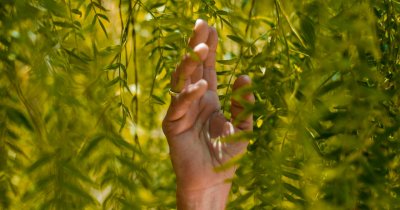To understand what sustainable farming is, we need to go back in time to the beginnings of agriculture and the first habits, which persisted until very recently. Traditional agriculture implies using a certain piece of land, which is suitable for growing crops, for as long as possible, without taking into account measures to preserve soil quality.
Sometimes, traditional farming implies deforesting certain areas in order to find new pieces of land to exploit and uses old school equipment to grow crops. Another characteristic of classic agriculture is the fact that farmers usually grow one or two crops at the most in the same area over and over again, which is again bad for preserving soil quality and in case of pests.
All or some of these habits are present especially in poorer rural areas and I have certainly noticed them many times during my childhood, with some farmers around the area where I grew up still growing the same old potato and cabbage on the same fields for over 20 years now.
What is sustainable farming
Renewable energy and less land use are among the priorities of sustainable farming, as present-day farmers look at alternative ways of growing certain crops, as we'll see in a minute. Also, sustainable farming goes beyond the field and it implies consuming less foods in general to reduce the stress on farming land, but also to reduce food waste.
This is because around 30% of the food produced globally ends up as waste.

Sustainable farming also aims to reduce pollution, by using less chemical-based solutions and by switching to clean power tools, such as battery and hydrogen-powered tractors, sprayers and combine harvesters. Some farmers even go the extra mile to innovate and use manure from farm animals in order to produce a form of sustainable fuel that prevents methane emissions from reaching the atmosphere.
Why is sustainable farming important
Sustainable farming is important because it helps us preserve soil quality, while it also encourages crop and biodiversity. Also, by discouraging deforestation and using fertile land responsibly, it prevents pollution and supports rural economic growth, while improving on the life of farmers, regardless of where they are based.
It also raises people's awareness regarding the environment and sparks innovation, such as in the case of the French farmers who discovered a new way to power their farming gear, without using any more polluting fossil fuels.
Sustainable farming is also important because it teaches us how to use natural resources more responsible, especially since almost none of those are renewable/infinite. Thus, better water management and storing carbon emissions underground are some of the practices that future farmers will have to do in order to make agriculture more nature-friendly.
Smart agriculture also implies the latest technologies in this field, which can increase the resilience in the face of extreme weather events. Of course, this doesn't automatically make our crops completely invulnerable, but it helps us better predict where a storm might hit and what we can do in order to mitigate its effects on our yields.
The three pillars of sustainable farming
Sustainable farming covers three aspects of today's society. First, it's the environment, which is obviously the closest to agriculture, as nature is the basis of growing crops and feeding the population. Consequently, it aims to reduce pollution, to preserve soil quality and the non-renewable or slowly-renewable resources, such as water. This is more important since droughts have become part of the lives of millions of people, Europe being a continent hit very frequently by such events in recent years.

There is also the social-territorial aspect of the matter, which aims to provide enough food for the local population and the rest of the world, in the case of large-scale farms, while also not sacrificing on the territory of the farmers themselves. This means not cutting into forest areas or destroy farming land by over-growing it.
Finally, there is the economic side of things, which aims to ensure that farmers have a prosperous economic activity and get their money's worth out of their work.
Sustainable farming practices
Crop rotation is one of the most important aspects when we are talking about sustainable farming, as this ensures a variety of crops, resilience in the fact of pests and is one of the best ways to preserve soil fertility.
Improving crop irrigation is another sustainable farming practice, as it helps with reducing water use, while enabling us to grow healthier crops in return.
One of the more efficient ways of irrigation for modern agriculture is considered to be drip irrigation, which uses 20-40% less water compared to furrow irrigation, while ensuring 20-50% more crops survive by the time of harvesting.
Cover crops are one thing that many farmers, especially in Romania, don't take advantage of. However, these crops are one of the best ways of preserving soil quality, prevents erosion and even allows the forming of natural nutrients later on. Cover crops, which are being planted off-season, have multiple advantages, such as the fact that the seeds are inexpensive and can grow on their own, without much assistance and they feed the soil with the necessary nutrients for the crops that are actually used for food.

Additionally, cover crops can provide good cover, no pun intended, for beneficial insects, such as bees, which can get help in the process of pollination.
Vertical farming is the future of sustainable farming
One benefit of sustainable farming is that there are multiple ways of growing crops, so this means we are not limited to using traditional fields.
Vertical farms take sustainability to another level and the automation there is even more impressive and easy to implement, considering the nature of these locations.

Regardless of the form of sustainable farming, we need to rethink our entire farming system in order to ensure we will be able to feed not only the population today, but the generations of tomorrow, especially since the world is projected to increase significantly in population. Since many of the sustainable farming methods imply significant investment, farmers that don't have as many resources must receive financial help from the authorities in order to successfully make the transition to a responsible agricultural system.
 Mihai - Cristian Ioniță
Mihai - Cristian Ioniță












Any thoughts?